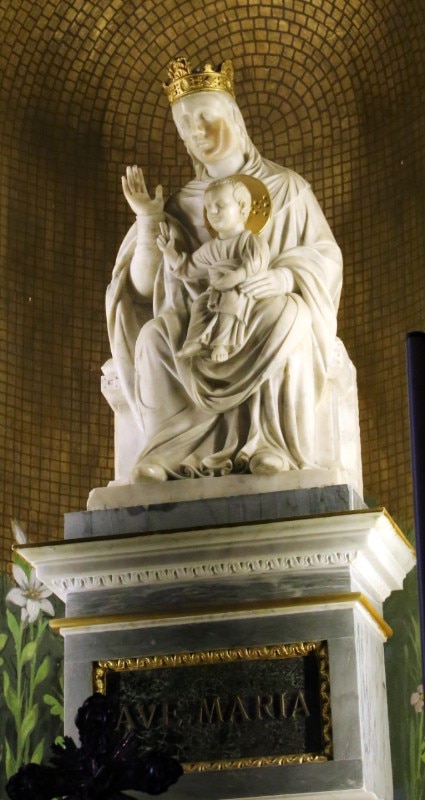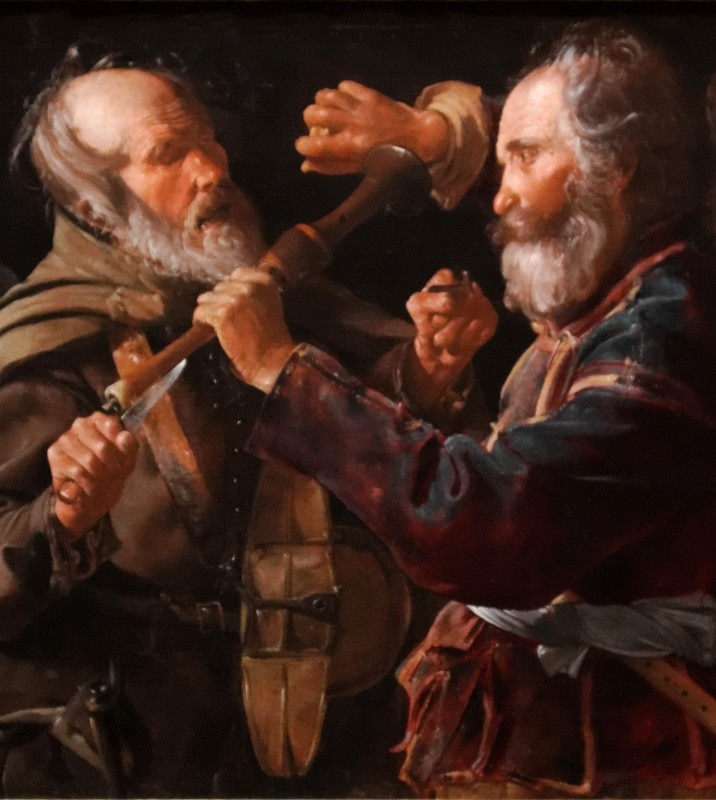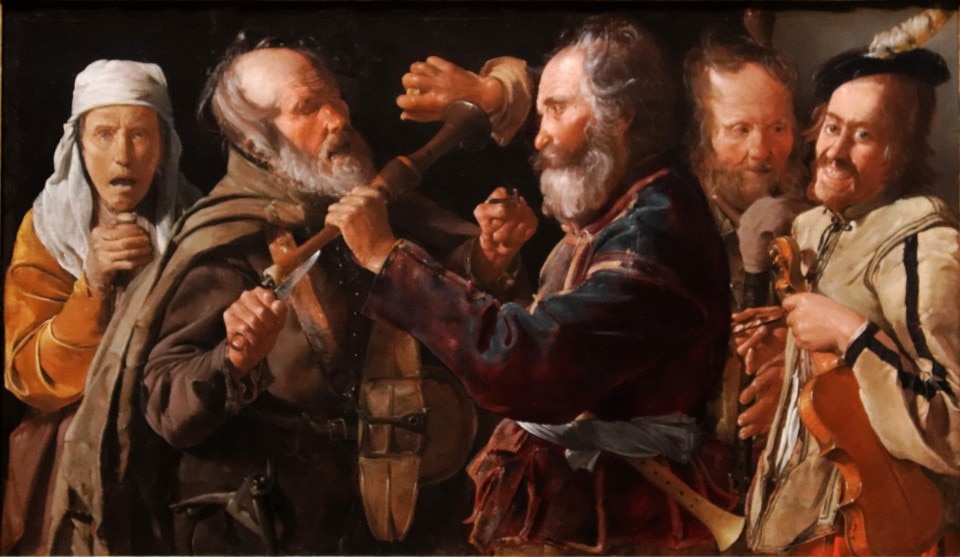They say even presidents cry. Or, apparently, get slapped. Not exactly a breach of state protocol, but a rumored and sensational slap allegedly delivered by France’s First Lady, Brigitte Macron, to her husband Emmanuel went viral on social media. The president later denied and said it was just a joke, maybe it was—but it nevertheless revealed an uncomfortable truth: human curiosity and our instinct for fight, even marital one, is more powerful than any protocol. And if we take a closer look, art history is no different.
Curiously, this presidential ‘slap’ finds an echo in a much older artwork with a completely different meaning: the Madonna dello Schiaffo (Our Lady of the Slap). This sculpture of the Madonna and Child, dating back to the early 13th century and housed in the Cathedral of Vercelli, stands out in the historical and artistical landscape as a work of notable significance. Curved from a single block of pure white marble, it not only reflects the mastery of the Romanesque period but also serves as a tangible heritage to centuries of devotion and popular storytelling, which have shaped its meaning and perception over time.

Her left cheek, marked by a bruise, is not a simple flaw in the material, but a trace of popular history. According to tradition, in the 13th century, a drunken man—blinded by sacrilegious rage—struck the image of the Virgin, leaving an indelible mark on her marble face. This is more than just a story; it represents collective anxiety, the crystallization of fear over a sacred offense and a deep faith in divine reaction manifesting itself in the very body of the artwork. In this sense, art becomes not only a reflection of beauty but also a mirror of moral tensions and expressions of the divine in everyday medieval life.
Similarly, another story, set in the first half of the 16th century, tells of a gambler who, after striking the statue of the Madonna in Vercelli’s Cathedral, found himself trapped inside the church as the figure began to bleed. Later executed, he became part of a tale that transformed the site into a sanctuary, especially visited during times of plague and disaster. Unsurprisingly, it is precisely during times of epidemic and catastrophe—when a community faces the unknown and suffering—that the image of the Madonna becomes the focal point of devotion. The statue, then, is no longer just an aesthetic object, but a psychological and social anchor, an intercessor between the mortal and the divine, capable of easing anguish and reinforcing communal bonds in the face of threat—a symbol of survival and a catalyst for collective hope.

If the pure whiteness of the Madonna dello Schiaffo—which playfully invites ironic speculation about the apocryphal gesture—leads us to reflect on gesture within a domestic and emotional dimension, a far more dramatic portrayal of conflict emerges in Georges de La Tour’s work The Beggars’ Brawl. Here, the focus shifts from the intimate to the universal, from devotional storytelling to the relentless depiction of raw reality.
Georges de La Tour does not stop at mere anecdotal depiction. The scene is shaped by light, typical of the French master, which, rather than illuminating grace, exposes its absence, delving unflinchingly into the nature of existence. Here, the use of chiaroscuro becomes a tool for formal and psychological investigation. The masses of light and shadow are not merely juxtaposed to create theatrical effects, but rather interpenetrate and define one another, sculpting the figures and planes with rigorous geometric order. The faces are molded by directional lighting that enhances their plasticity, making them almost sculptural in their tragic clarity. What is explored here is not childlike sweetness or marital harmony, but the harsh struggle for survival—the primal clash for existence that gives rise to violence and despair.

Though dynamic in its portrayal of conflict, the composition retains a sense of intrinsic stability through the balance of diagonals and the positioning of the bodies. Georges de La Tour passes no moral judgment on the scene; his gaze is almost surgical in its clarity—an objective analysis of the phenomenology of despair. He does not simply portray poverty; he probes its behavioral consequences, exposing both the vulnerability and, paradoxically, the residual dignity of those pushed to society’s margins. The light that falls on the beggars’ faces is not redemptive, it is revealing, laying bare the scars of a life of deprivation and the wounds inflicted by daily struggle.
Thus, the three ‘slaps’—the alleged and ironic one of gossip, the symbolic and sacred one in the Marian narrative, and finally the realistic and desperate one in the beggars’ fight—emerge as conceptual touchpoints through which art examines the complexity of human relationships. These are not mere gestures, but signifiers: tools carrying a deeper understanding of human experience. From the lightness of rumor to the depth of theological reflection, and on to the stark materialization of social reality, artistic investigation proves to be an essential tool for decoding the endless nuances of human nature in all its varied expressions. In this sense, painting is not simply imitation, it is the construction of knowledge, a visual analysis that allows us to delve into the intrinsic dynamics of life.


